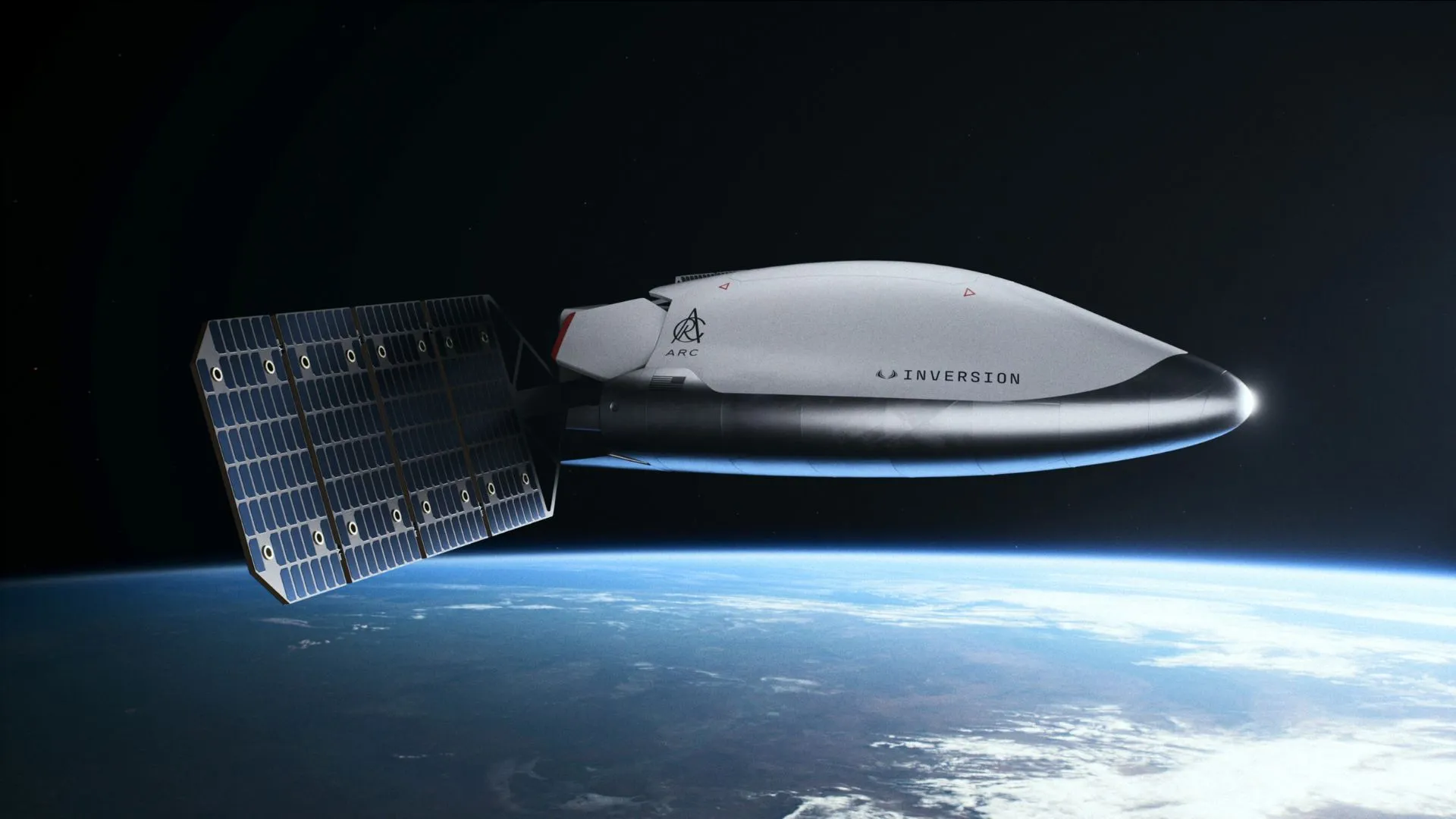
Inversion, a young aerospace and defense company based in Los Angeles, has unveiled its first flagship spacecraft, Arc.
The reentry vehicle is designed to deliver up to 500 pounds of mission-critical cargo from orbit to almost any point on Earth in less than an hour. The company revealed the spacecraft during an event at its factory.
Co-founders Justin Fiaschetti and Austin Briggs, who started the company in 2021, presented Arc as a new kind of logistics platform.
“Arc represents the next leap, creating a logistics network in space that will make Earth radically more accessible,” Fiaschetti said.
Spacecraft designed for rapid drops
Arc stands about 8 feet tall and 4 feet wide, roughly the size of a large tabletop. It is built to handle deliveries ranging from medical kits to drones.
In an interview with Ars Technica, Fiaschetti said the company plans to keep Arcs in orbit for extended periods, ready to descend when called upon. “The nominal mission for us is pre-positioning Arcs on orbit, and having them stay up there for up to five years… being able to bring their cargo or effects to the desired location in under an hour,” he said.
The spacecraft is a lifting body design, meaning it can maneuver as it reenters the atmosphere.
According to the company, Arc has a cross-range of about 621 miles during reentry, allowing it to steer across wide areas before descent.
Instead of needing a runway, the vehicle lands under parachutes. Its propulsion system uses non-toxic materials, which allows soldiers to handle it safely without protective gear immediately after touchdown.
“We like to describe this as mission-enabling cargo or effects,” said Fiaschetti. “This could be a wide variety of specific payloads, anything from medical supplies to drones to what have you. But the key discriminator is, does this make a difference in the moment it’s needed when it gets back down to the ground?”
Hypersonic testing role
Beyond delivery, Inversion is pitching Arc as a hypersonic test platform.
The spacecraft can reach speeds above Mach 20, maintain extreme conditions for longer durations, and sustain heavy g-forces. U.S. defense agencies have increased funding and focus on hypersonic research, and Inversion believes Arc offers a cost-effective way to support that work.
“Fully reusable and capable of precise landings for rapid recovery, Arc makes hypersonic testing faster, repeatable, and more affordable,” the company said in its announcement. Inversion’s selection to participate in the Kratos-led MACH-TB 2.0 program indicates growing interest in Arc’s role as part of national testing infrastructure.
By combining maneuverability with reusability, Inversion argues that Arc provides both defense logistics and advanced research capabilities in one platform.
Building on earlier work
Arc follows Inversion’s smaller demonstration spacecraft, Ray, which launched in January on SpaceX’s Transporter-12 rideshare mission.
Ray weighed about 200 pounds and tested systems such as propulsion, avionics, and solar power. While Ray successfully adjusted its orbit and continues to function, it was not designed to land.
“Ray won’t be coming back,” Fiaschetti told Ars Technica. “We’re doing long-term testing of software on orbit.”
That test gave Inversion confidence to begin work on Arc. The company says it has already built a full-scale development unit of the primary structure, run dozens of drop tests, and completed aerodynamic modeling.
“Every milestone brings Arc closer to flight maturity, and the pace of progress is only accelerating,” said Briggs, the company’s chief technology officer.
The team has also partnered with NASA on a thermal protection system for extreme reentry conditions. Inversion, now 60 employees strong, aims to fly Arc’s first mission by 2026.